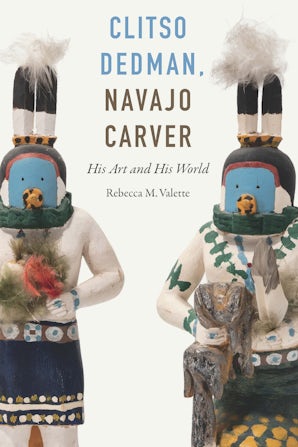“Rebecca Valette’s history of the life of the early to mid-twentieth-century Diné trader, architect, and master wood carver Clitso Dedman is a fascinating work—well written and beautifully illustrated. Empathetically written in consultation with descendants, it also uses an amazing array of print and archival sources, which would-be writers of poorly documented Indigenous life histories will appreciate. The book’s thorough inventory of Dedman’s carvings and their dispositions will interest students of Indigenous art marketing and collecting as well.”—Klara Kelley, coauthor of Navajoland Trading Post Encyclopedia
“Although Clitso Dedman’s artistic career spanned only about thirteen years, his carved figures are instantly recognizable and highly prized by collectors and dealers alike. As the first detailed account of Dedman’s life, this book is an important contribution to the literature and allows a deeper appreciation for his work. Weaving together a wealth of obscure facts about the artist’s life, Rebecca Valette gives a wonderful account of how one man bridged two cultures, a problem that continues to challenge nearly every Native American today. Equally important, Valette establishes a guide to dating Dedman’s work, the majority of which still remains in private collections.”—Russell Hartman, former anthropology collections manager at the California Academy of Sciences and former director-curator of the Navajo Nation Museum
“Rebecca Valette has uncovered long-hidden information about one of the most important artists of the Navajo Nation. This book reveals for the first time the early life of Clitso Dedman and his relationship with Indian traders on the Navajo Nation, which encouraged his wood carvings of participants in ceremonial life of the Diné people, particularly the Nightway ceremony. Additionally, Valette reveals the known locations of Dedman’s carvings—single carvings, sets of four carvings, and his magnificent and rare complete sets containing sixteen carvings. Because of Valette’s diligent work, the works of this Diné artist are documented and available for the first time ever.”—Alexander E. Anthony Jr., owner and director of Adobe Gallery, Santa Fe, New Mexico
